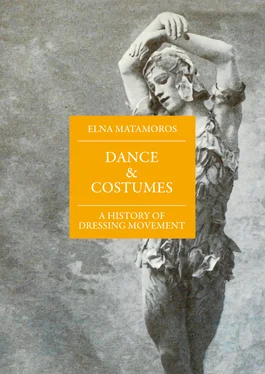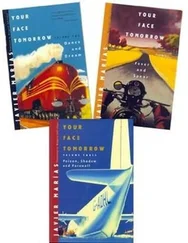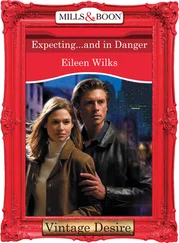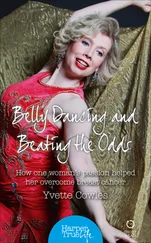18Based in Russia, Petipa created a huge repertoire and consolidated the academic ballet training; he also re-staged the old romantic ballets as they were performed in Russia; vid. infra, chap. 8.
19Dancer and teacher at the Mariinsky Ballet in Saint Petersburg. It was her career as a ballet teacher what gave her prestige, but she also re-staged new versions of old ballets and choreographed some original pieces like Carnival in Venice Divertissement or Diana and Actaeon Pas de Deux .
20vid. infra, chap. 10and 11.
21vid. infra, chap. 13.
22vid. infra, chap. 3and chap. 13, respectively, for one and the other.
23Trained at the Imperial School of Ballet in Russia, he was an experienced performer of the romantic and classical ballets before starting his own career as a choreographer. His Russian name was МихаилФокин (Mikhaíl Fokin), but once in the West he started to use the French version, Michel Fokine, and later the English form of his name, Michael Fokin. Among the different variants found, we chose Michel Fokine as it is the most frequently used. We will be doing this in similar cases.
24vid. infra, chap. 12, “The contributions….”
25vid. infra, chap. 13.
26vid. infra, chap. 11.
27Balanchine created the Black & White Ballets : the female dancers wear pink tights with black leotard, and the male dancers wear black tights with white t-shirt; vid. infra, chap. 13.
28cfr. TER-ARUTUNIAN, “Designing for Dance,” in International Encyclopedia of Dance…
2. THE EMANCIPATION OF DANCE: COSTUMES, CHOREOGRAPHY AND ATTITUDES
The professionalization of dance gave rise to a genre that had already begun to be called ballet and managed to break through the stalemate that it had endured by being performed only by amateur dancers, courtiers, and other idle people of different categories and respectability. As an independent genre –exuberant, absurd and surprising– the ballet de cour 1could not survive for long considering the social changes that were advancing into France, the country where it originated. These performances, always held in the court premises, were designed, performed and enjoyed only by courtiers, causing this genre to die out around 1665, which gave way to other genres such as ballet mascarade , ballet à entrées and, subsequently, the opéra-ballet .
The ballet de cour , by contravening the three classical unities for theatre –action, time and place– presented greater scenic possibilities, and the new creators enjoyed more artistic freedom. For example, the characters being interpreted would be costumed following the fashion of the time and sometimes they were provided with a specific symbolic element that transformed the performance into an important propaganda tool. 2Following the rules of the court where the ballet de cour began, the segregation of sexes established that only the ladies of the nobility could act in proximity to the Queen, while only men could dance with the King; thus, certain roles were played by men dressed in transvestite; not a major difficulty considering the complexity of the wardrobe and the masks, and the sophisticated make-up used in the performances. 3Some courtiers played certain characters so often that they came to reflect them in their own personal behaviours. This happened to Louis XIV of France: his favourite character played on stage, Apollo, had a specific solar meaning, which led to the appearance of the Sun in his performances, which in turn, led to his nickname, “Le Roi Soleil,” 4evidently making it more relevant. 5

2.1 - Le Roi Soleil en costume de thêatre ; Louis XIV au Carrousel Costume design by Henri de Gissey. Original coloured print.
To understand entirely the absurdity of this genre it suffices to name the Ballet Comique de la Reine , considered as the first ballet de cour containing all the elements of the genre, performed the 15 thof October of 1581 on the occasion of the wedding of the Duke of Joyeuse, a favourite of the King, with the sister of Queen Louise, Marguerite de Lorraine. 6The five-hour long presentation, based on Homer’s Odyssey , took place in the large hall of the Hôtel du Petit-Bourbon, adjacent to the Louvre Palace, a place so spacious that the King, as a spectator, was more than 50 metres away from the performance. 7
The choreographer, Balthasar de Beaujoyeleux, 8had a difficult time to come up with some interesting geometric designs or patterns 9since he could only count on a few courtesans as performers, who probably did not shine for their talent as dancers: moreover, from the King to the least significant performer, each had to shine, but above all the monarch. Even today, there is an entrechat –the simplest of the whole family of the entrechats family, because it barely has one crossing of the feet during the jump– whose name is royal entrechat because precisely the King was the only dancer allowed to perform it: it would undoubtedly be a triumph of the social permeability of dance and an irony of destiny 10if true, but it may well only form part of a legend. On the other hand, the costumes used did not make it much easier to perform any steps that were far beyond a mere rhythmic walking, since there was little or no difference between the stage and civil clothing, to the extent of ignoring the period and aesthetic references of the characters being interpreted. 11The absence of any scenic sense –still undeveloped– allowed brocades, precious stones and other luxurious accessories to be real, so they did not spare any means for their productions. As a genre, the ballet de cour held such ostentatious and absurd artistic concepts that when the performance finished, all the costumes, stage elements etc. were piled on an enormous pyre that was lit after a huge celebration with fireworks. Thus, each presentation show was truly unique and unrepeatable. 12
Le Roi Soleil was not exclusively focused on dancing: perhaps trying to alleviate court expenses, he created the Academies of Dance (1661) and Music (1666; originally called Académie d’Opéra). 13Besides bringing total independence to dance, the Académies regulated its teaching and performances, as well as fomenting the creation of new ballets. When dance –or at least the embryo being gestated– finally left the court and came on stage, the creative motivation of dancers and choreographers was not long in coming. They were eager to develop new steps and enchaînements [literally “chains” or brief choreographic phrases, consisting of one or two main steps and their corresponding ‘in-between-steps’ or movements to link them all]. In Italy, where the practice and theory of dance was slightly more developed, 14the famous Cesare Negri 15collected these practices and theories –in detail– in his treatise Le gratie d’amore (1602-04), dedicated in its first edition to Philip III, “re di Spagna et monarca del Mondo Nuovo,” and expanded it in his second one, titled Nuove inventioni di balli . This he compiled with great precision to explain things such as audacious steps with turns on one foot and twirls in the air, but also practical advice such as the logical need, for example, as looking for a point of support to train prior to performing some of the difficult movements. 16Obviously, the ballet masters wanted their dancers well trained… even before they had more specific steps to perform.
Читать дальше













